Title : Bioterrorism through the ages: Historical perspective, emerging threats, and medical countermeasures
Abstract:
Bioterrorism is defined as “the intentional release or threat of release of biologic agents—viruses, bacteria, fungi, or their toxins—to cause disease or death in humans, animals, or crops.” Bioterrorism remains a significant and evolving threat to public health. Though often associated with modern terrorism, bioterrorism has deep historical roots spanning over 2,000 years—from the contamination of water sources in ancient warfare to the deliberate spread of smallpox during colonial campaigns.
In the 21st century, this threat has expanded, with over 1,200 known biological agents identified for their potential use as weapons of mass destruction. The convergence of biotechnology, synthetic biology, and accessible genomic tools has lowered the technical barriers to developing these agents. Notably, the 2001 anthrax letter attacks in the United States highlighted the devastating impact a relatively small-scale bioterrorist act can have on public trust, healthcare systems, and emergency response networks.
The historical trajectory of bioterrorism and its clinical manifestations, drawing from documented outbreaks and intentional releases. Special attention should be paid to Category A agents (e.g., Bacillus anthracis, Variola virus, Yersinia pestis) recognized for their high mortality, ease of dissemination, and potential to cause public panic.
In this context, healthcare professionals play the vital role of in early recognition, triage, infection control, and the deployment of countermeasures, including vaccines, antibiotics, and antitoxins. In addition, the architecture of modern biodefense systems such as the Laboratory Response Network (LRN), syndromic surveillance programs, and interagency emergency protocols are important tools for the medical community.
The SARS-CoV-2 pandemic demonstrated that the urgency for integrated preparedness strategies is greater than ever. Medical professionals are not only first responders but also frontline defenders in identifying and mitigating biologic threats. By enhancing our clinical vigilance, investing in ongoing training, and strengthening interprofessional collaboration, we can fortify our healthcare systems against future bioterrorist events.



